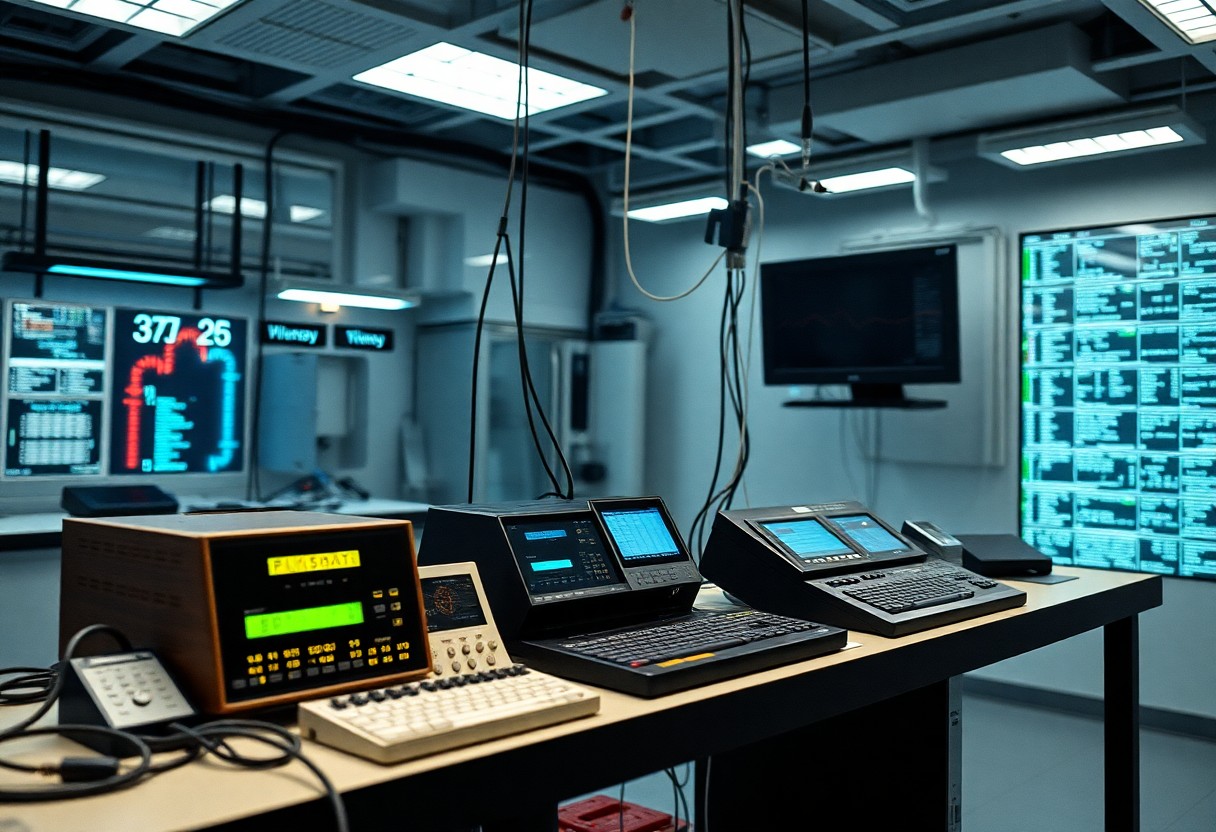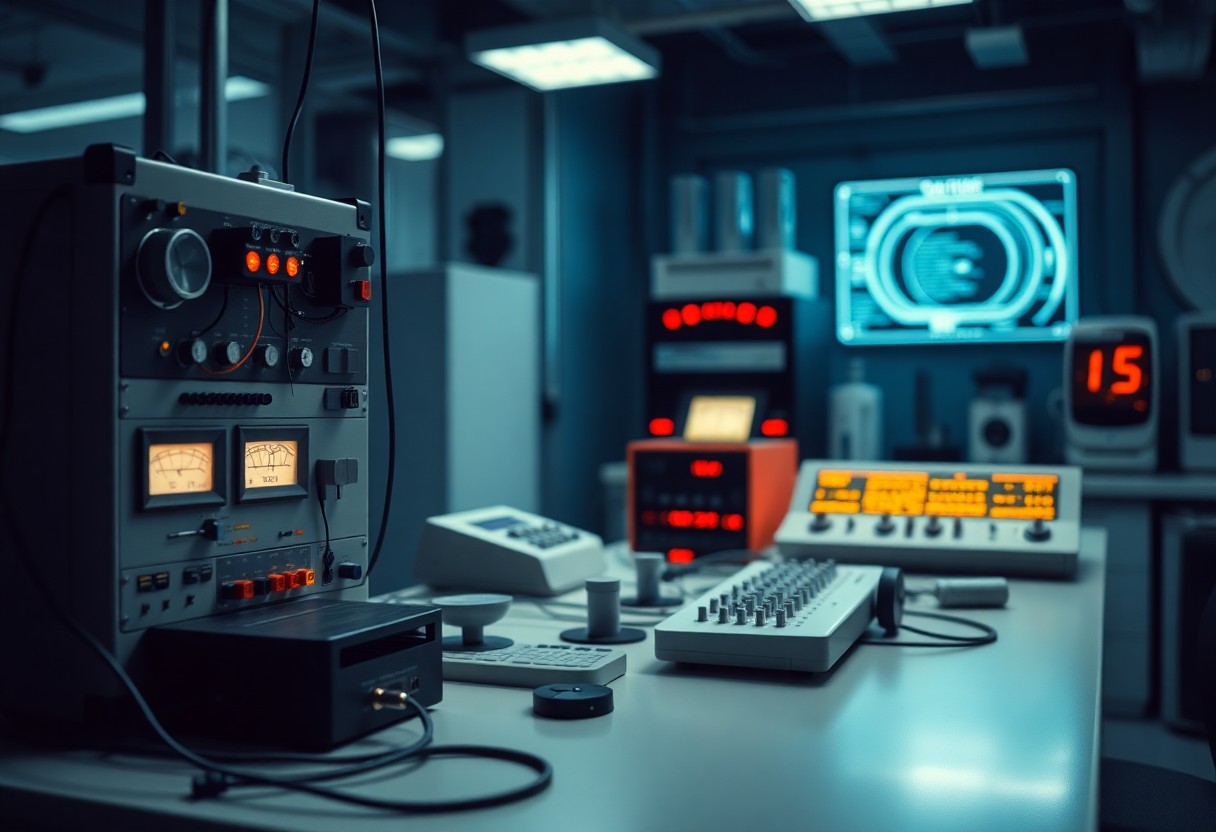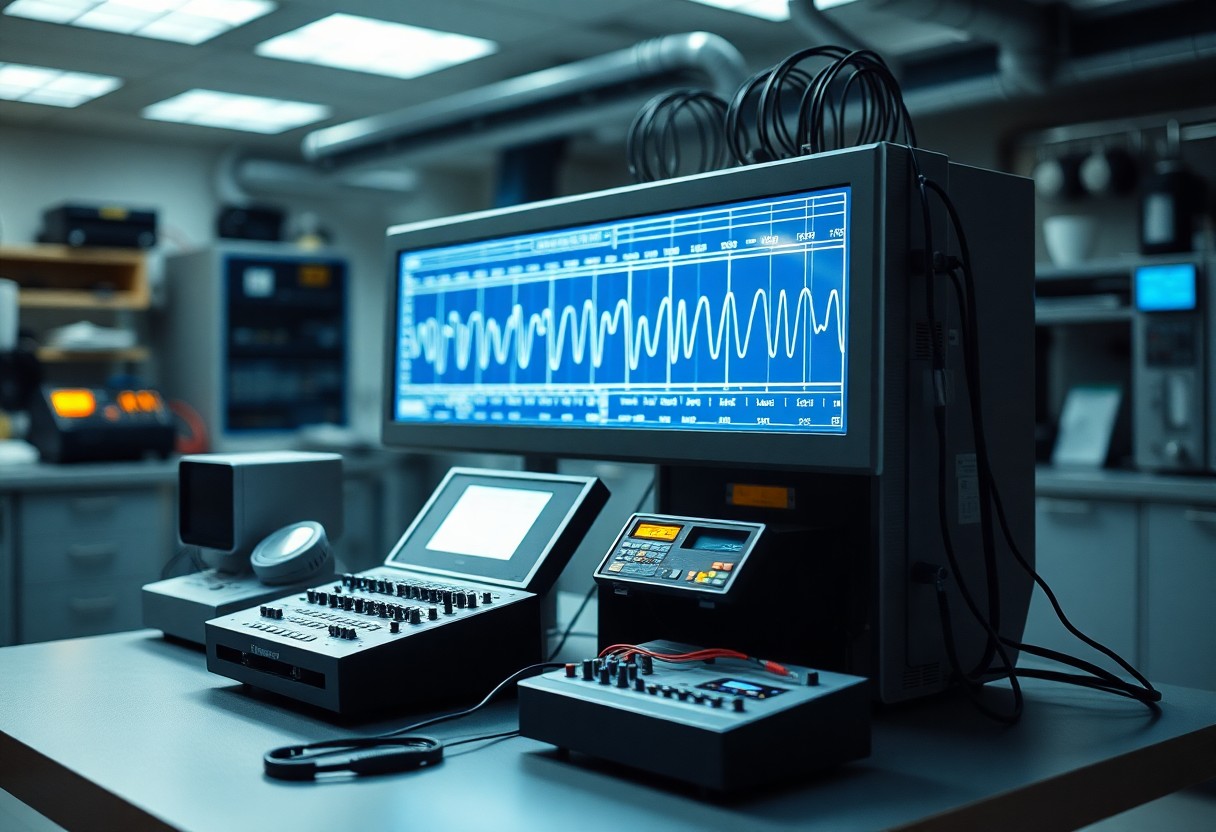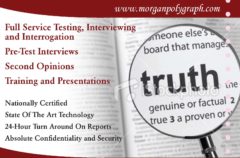
Truth is an crucial aspect of human interaction, and the quest for verifiable honesty has led to the fascinating development of polygraph technology. In this post, you will explore the history and advancements in lie detection methods, from early techniques to modern innovations that promise greater accuracy. As you learn about the technological milestones and the implications of these tools, you’ll gain insight into how they impact criminal investigations and personal relationships alike, shaping your understanding of truth verification in today’s world.
Key Takeaways:
- Historical Development: Polygraph technology has evolved significantly from its inception, integrating various advancements in sensors and data analysis methodologies over time.
- Accuracy Improvements: Ongoing research and refinement of algorithms have contributed to enhanced accuracy in detecting physiological responses associated with deception.
- Ethical Considerations: The use of polygraphs raises important ethical questions regarding privacy, consent, and the reliability of results in judicial and employment contexts.
Historical Context
Before the advent of modern technology, society relied on rudimentary methods to discern truth from deception. Our ancestors employed various techniques, from oral testimonies in front of community members to simple observations of body language and facial expressions. These primitive forms of verification laid the foundation for more sophisticated approaches, illustrating humanity’s long-standing quest for truth and justice.
Early Methods of Deception Detection
Early techniques to detect lies included folklore practices such as trial by ordeal, where individuals were subjected to physical tests, and the examination of traits deemed indicative of dishonesty. These unreliable methods often relied on superstition rather than scientific validation, leading to many wrongful conclusions about individuals’ truthfulness.
Development of the Modern Polygraph
Methods of truth verification evolved significantly in the 20th century with the invention of the modern polygraph. This sophisticated device measures physiological responses like heart rate, blood pressure, and respiration, providing a more objective approach to deception detection. Pioneered by John A. Larson in the 1920s, the polygraph emerged as a scientific tool that sought to minimize human error in judgment. As you explore the history, you’ll find that the polygraph’s design has been refined over decades, incorporating advanced technology to enhance its accuracy and credibility, thereby transforming the landscape of truth verification.
Technological Advancements
Any discussion about polygraph technology must include the significant technological advancements that have occurred over the years. Innovations in sensor technology, enhanced algorithms, and sophisticated data analysis tools have contributed to improved accuracy and reliability in truth verification. These developments not only elevate the role of polygraphs in investigative settings but also pave the way for their potential applications in various fields, from law enforcement to corporate settings.
Innovations in Sensor Technology
Across the field of polygraphy, innovations in sensor technology have greatly enhanced the capability to measure physiological responses accurately. New generation sensors are now capable of monitoring a variety of indicators—such as heart rate, respiration patterns, and skin conductivity—with unprecedented precision. This evolution allows you to capture more nuanced data, ultimately leading to better insights into the subject’s emotional and physiological states during questioning.
Integration of Software and Data Analysis
By incorporating sophisticated software and advanced data analysis, polygraph machines have transformed into powerful tools for truth verification. This integration streamlines the examination process, allowing you to analyze vast amounts of data quickly and efficiently. Artificial intelligence and machine learning algorithms can identify patterns and anomalies that traditional methods might overlook, enhancing the reliability of results and enabling you to make more informed decisions.
At the forefront of these developments, advanced data analysis leverages machine learning and artificial intelligence to refine the polygraph process. By applying statistical models to physiological data, you can uncover meaningful trends that were previously imperceptible. This not only improves accuracy but also increases confidence in findings, making them more acceptable in legal and other formal environments. The improved software capabilities, coupled with the enhanced sensor technology, create a more comprehensive understanding of a subject’s responses, facilitating more effective truth verification.
The Science of Polygraphy
Now, as you research into polygraphy, it’s key to understand its scientific underpinnings. The polygraph machine measures various physiological responses such as heart rate, blood pressure, respiratory rate, and skin conductivity to assess truthfulness. For comprehensive insights, refer to From the Roots to the Branches: Evolution of Polygraph Tests, where the historical journey of this technology is explored in detail.
Physiological Responses Measured
Above all, a polygraph’s accuracy relies heavily on the physiological responses it captures. These include your heart rate, which increases with stress; changes in blood pressure, indicating anxiety; and altered breathing patterns that can signify discomfort when questioned.
Theoretical Framework Behind Truth Verification
Among the various theories that support truth verification through polygraphy, the most noteworthy is the concept of physiological arousal. This theory posits that deceptive behavior triggers a series of involuntary stress responses, making physiological markers a reliable source of truthful assessments.
Science plays a pivotal role in shaping the theoretical framework behind truth verification in polygraphy. The critical aspect lies in understanding how your body reacts under stress when you consider lies versus truths. Each physiological response can reveal heightened anxiety or stress signals, ultimately aiding in distinguishing truth from deception. However, it’s important to acknowledge that physiological responses are not absolute indicators of lying; they can also be influenced by personal experiences and emotional states, highlighting the complexity of human behavior in the quest for truth.

Practical Applications
Your understanding of polygraph technology goes beyond theory; it has real-world implications. Whether in law enforcement or corporate environments, the polygraph serves as a tool for assessing honesty and reliability. For a fascinating read on the history and development of this technology, check out A Brief History of the Lie Detector.
Use in Criminal Investigations
Before a suspect can be deemed truthful, investigators often turn to polygraphs to ascertain the veracity of statements during criminal investigations. The results can guide law enforcement in identifying deceit and corroborating or refuting claims, ultimately shaping case outcomes.
Employment Screening and Security
Beside the judicial system, polygraphs are also widely utilized in corporate environments for employment screening and security purposes. These assessments can help organizations determine the integrity of potential hires or existing employees handling sensitive information.
It is imperative to note that while polygraph tests are used to screen applicants, the efficacy and legality can be contentious. Some believe that a positive result can indicate trustworthiness, while others may challenge the accuracy of such tests. Organizations employing these methods must tread carefully, as mishandling results can lead to legal ramifications or damage to company reputation. Understanding both the benefits and limitations of polygraph technology is vital for effective implementation in your hiring practices.
Challenges and Controversies
Unlike many technological advancements, polygraph technology is fraught with challenges and controversies that can undermine its credibility. Public perception often questions the validity of polygraphs, leading to disputes over their admissibility in legal settings. This skepticism can hinder the progress of further enhancements and adoption of polygraph tests in various sectors.
Accuracy and Reliability Issues
Issues surrounding accuracy and reliability persist in the use of polygraphs. Many studies reveal that results can be influenced by various factors, such as the test-taker’s psychological state, physical condition, or even the examiner’s biases. This uncertainty raises questions about how trustworthy these machines truly are in determining truthfulness.
Ethical Considerations in Use
On the topic of ethics, the use of polygraphs presents significant considerations that you must weigh. The implications of utilizing polygraphs for truth verification can involve not only privacy infringements but also issues of consent and potential misuse of the gathered data.
Another aspect to think about is the potential for misapplication of the technology, leading to wrongful accusations or decisions based on inaccurate results. Ethical dilemmas arise when you consider how the outcomes of polygraph tests can impact individuals’ lives, careers, and reputations. The possibility of manipulating results or misinterpreting data can create an environment of distrust, making it imperative for stakeholders to approach polygraph use with caution and to always prioritize transparency and informed consent.

Future Directions
Keep an eye on the future of polygraph technology as researchers explore innovative methodologies and advanced algorithms to improve accuracy. The evolution of this field is ongoing, and you can stay informed by reading A review of the polygraph: history, methodology and …. As technology progresses, the potential for more reliable truth verification will unfold, adapting to the needs of modern investigations.
Emerging Technologies and Techniques
Between the integration of artificial intelligence and biometric sensors, the polygraph is undergoing a significant transformation. These emerging technologies hold the promise to provide you with more sophisticated methods of analyzing physiological responses, potentially leading to breakthroughs in the accuracy of truth verification processes.
Potential for Enhanced Accuracy and Acceptance
Against the backdrop of skepticism surrounding polygraph reliability, recent advancements aim to bolster its credibility and improve its accuracy. By refining data collection methods and employing sophisticated algorithms, you may find that the polygraph becomes more entrenched in law enforcement and judicial systems.
Indeed, this potential for enhanced accuracy and acceptance could reshape the landscape of polygraph use. By leveraging data-driven approaches and incorporating cutting-edge technology, researchers are working to eliminate biases and improve test reliability. As the scientific community continues to refine methodologies, you may see an increase in the willingness of courts and law enforcement agencies to accept polygraph results as reliable evidence, transforming its application in both criminal investigations and employment screenings.
Conclusion
Ultimately, your understanding of polygraph technology’s evolution reveals the significant advancements made in truth verification methods. As techniques continue to improve, you can appreciate the balance between science and ethics aimed at enhancing accuracy and reliability. Staying informed about these developments not only benefits your knowledge but also empowers you to make informed decisions regarding the use of polygraphs in various contexts, from criminal justice to corporate investigations.
FAQ
Q: What are the key historical developments in polygraph technology?
A: The history of polygraph technology dates back to the early 20th century when the first polygraph device was developed by John Augustus Larson in 1921. Initially, the focus was on measuring physiological responses such as heart rate, blood pressure, and respiratory rate to detect deception. Over time, advancements were made in technology and methodology, leading to the modern computerized polygraph systems we see today. The integration of software programs that analyze data trends has significantly improved accuracy and interpretation. Furthermore, there have been ongoing debates regarding the ethical implications and scientific validity of polygraph testing, pushing researchers to continue refining techniques for better truth verification.
Q: How has polygraph technology improved in terms of accuracy and reliability?
A: Polygraph technology has seen significant advancements aimed at increasing accuracy and reliability. The introduction of computerized polygraphs has allowed for more precise measurements and the ability to analyze data in real time. Additionally, modern polygraphs can incorporate various physiological indicators, such as galvanic skin response and facial recognition technology, which provide a more comprehensive analysis of an individual’s state during questioning. Improved training for examiners in interpreting results has also contributed to a higher accuracy rate. However, despite these enhancements, the scientific community is still divided over the infallibility of polygraph results, prompting ongoing research in the field.
Q: What are the future prospects for polygraph technology in truth verification?
A: The future prospects for polygraph technology in truth verification look promising as research and technological innovations continue to evolve. Ongoing developments in artificial intelligence and machine learning could further enhance the analytical capabilities of polygraph systems, allowing for more sophisticated assessment of physiological data. Moreover, interdisciplinary collaboration with fields such as psychology and neuroscience may lead to a deeper understanding of human behavior and deception. Despite the challenges regarding legal acceptance and ethical considerations, advancements in polygraph technology may also facilitate integration with other truth assessment methods, creating a more holistic approach to verifying truthfulness in various sectors, including law enforcement and security screenings.
